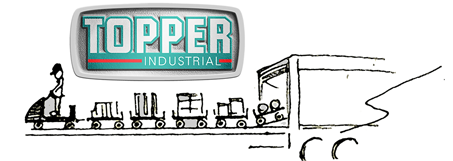A distribution center (DCs), especially in the Amazon Prime era, has a wide variety of SKU and products shipping from a single facility. In many distribution centers multiple sized packages need to utilize one production line in a warehouse. DCs must move stocked products or goods for redistribution to retailers, wholesalers, or directly to consumers. A distribution center has become an increasingly significant aspect of the entire order fulfillment process. Distribution centers are demand driven.
Order fulfillment centers commonly distribute goods directly to consumers, which may vary from golf clubs, to golf balls and so on to 100,000 various other SKUs of different types, product categories, and sizes. All that variety often means a nightmare for a DC manager who must ensure accurate material flow, delivering product (often on a single line) to pickers and packers.
Distribution centers are the foundation of a supply network, because they allow a single location to stock a vast number of products. Some organizations operate both retail distribution and direct-to-consumer out of a single facility, sharing space, equipment, labor resources, and inventory as required.
A large distribution center might receive and ship more than ten thousand truckloads each year and typically range in size from less than 50,000 square feet to 3 million square feet. The demand, thanks to Amazon and hundreds of 3PL (third party logistics) firms make the cost of every square foot of space more expensive than ever. The costs vary like the products on the single production line, but in general the cost of operating a distribution center has doubled since 2008. Finding lean and efficient ways to store and move product efficiently is essential with these pricing pressures mounting.
When DCs only shipped to retail stores, a fork lift truck moved stacked pallets. While the most dangerous equipment in a distribution center according to OSHA, these fork lifts have been the backbone of DCs in the Business to Retail environment.
Products arrived and were stored in a distribution center in varying types of storage locations and containers suited to the product characteristics and the amount of product to be transported or stored. These types of locations and containers have specific industry-accepted names. Specialized pieces of equipment (material handling equipment, or MHE) are used to handle the various types of containers.
The material handling standards specify the volume and dimensions of containers to facilitate efficient handling. Until the Business to Consumer (eCommerce and omnichannel) took over distribution centers, pallets were one of the most commonly used means to store and move product in a distribution center. There are many specialized devices (material handling equipment or MHE) used to handle pallets – see forklift truck, pallet jack, pallet inverter, unit load, and Automated Storage and Retrieval Systems (ASRS). No longer are pallets stored on the floor, stacked, and waiting for fork lifts to move the product around the distribution center.
Shipping quickly a lipstick tube or a new bed ordered online is out of the same facility. Things get particularly crazy when preparing for busy shopping seasons which requires distribution centers and 3PLs to stock product ahead of time (anticipating demand).
For most etailers, the Christmas shopping season is the busiest of the year and, a distribution center doubles the amount of inventory on hand and then draws this level down through the shopping season. This strategy is especially important for imported items. With lead times measured in weeks or months, stocking these products in a distribution center is often the only way to maintain in-stock status.
Topper Industrial looks at a distribution center as a production (or quasi-manufacturing) operation. Goods arrive in bulk, they are stored until needed, retrieved, and assembled into shipments. The efficient processing of a distribution center can greatly impact the final price of the product delivered to the end user, or in many cases the customer.
The Fork Truck Free environment allows less walk-time to gather products for shipping and with efficient processing it directly impacts the cost of goods through reduced labor, and indirectly impacts the cost of goods through reduced inventory. Reducing the processing time of order processing can directly reduce the amount of inventory necessary to be stocked in the operation.
Topper Industrial MHE, such as Industrial carts, containers, racks and and Topper tube and joint can ensure that the right product is delivered to the right line in the right sequence to impact maximum lean efficiencies.

About Topper Industrial
For more than twenty years, Topper Industrial, (www.topperindustrial.com) based just outside of Milwaukee, WI, has been a leader in the material handling equipment industry. The company’s product roster features industrial carts, conveyors, lifts, lifts & tilts, shipping racks, containers, casters, and cart components. From mother-daughter carts to quad steer carts to tilt carts and rotate carts, Topper’s material handling solutions make delivering material line side more effective through more efficient practices. Topper Industrial has a team of experienced professional experts able to assess and provide the right product for all material handling equipment requirements.
Topper Industrial is a proud member of MHI. Follow on Twitter @TopperInd or on LinkedIn.

